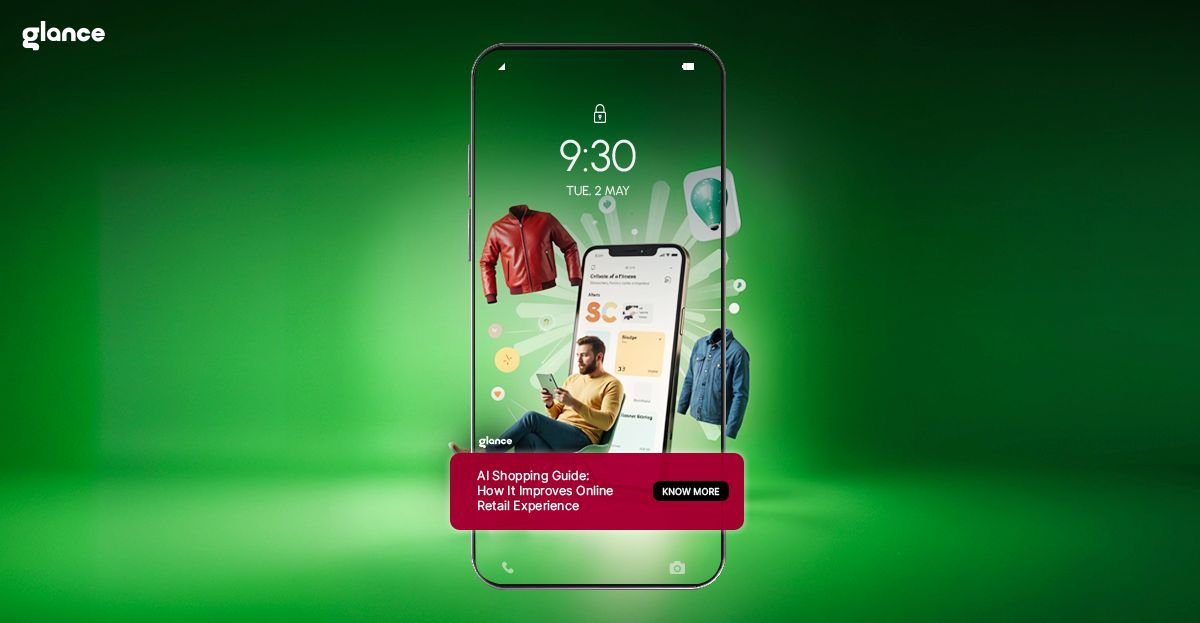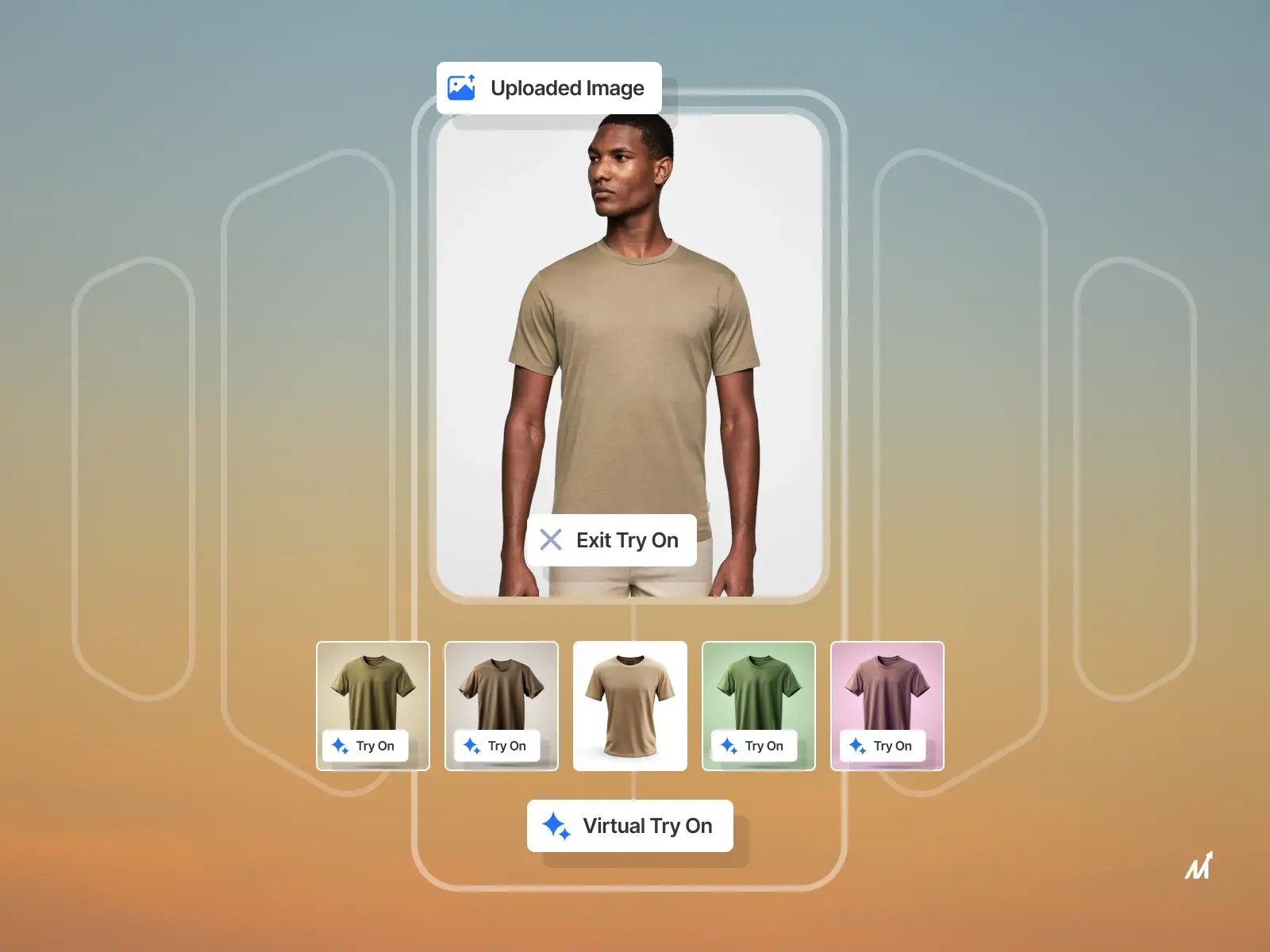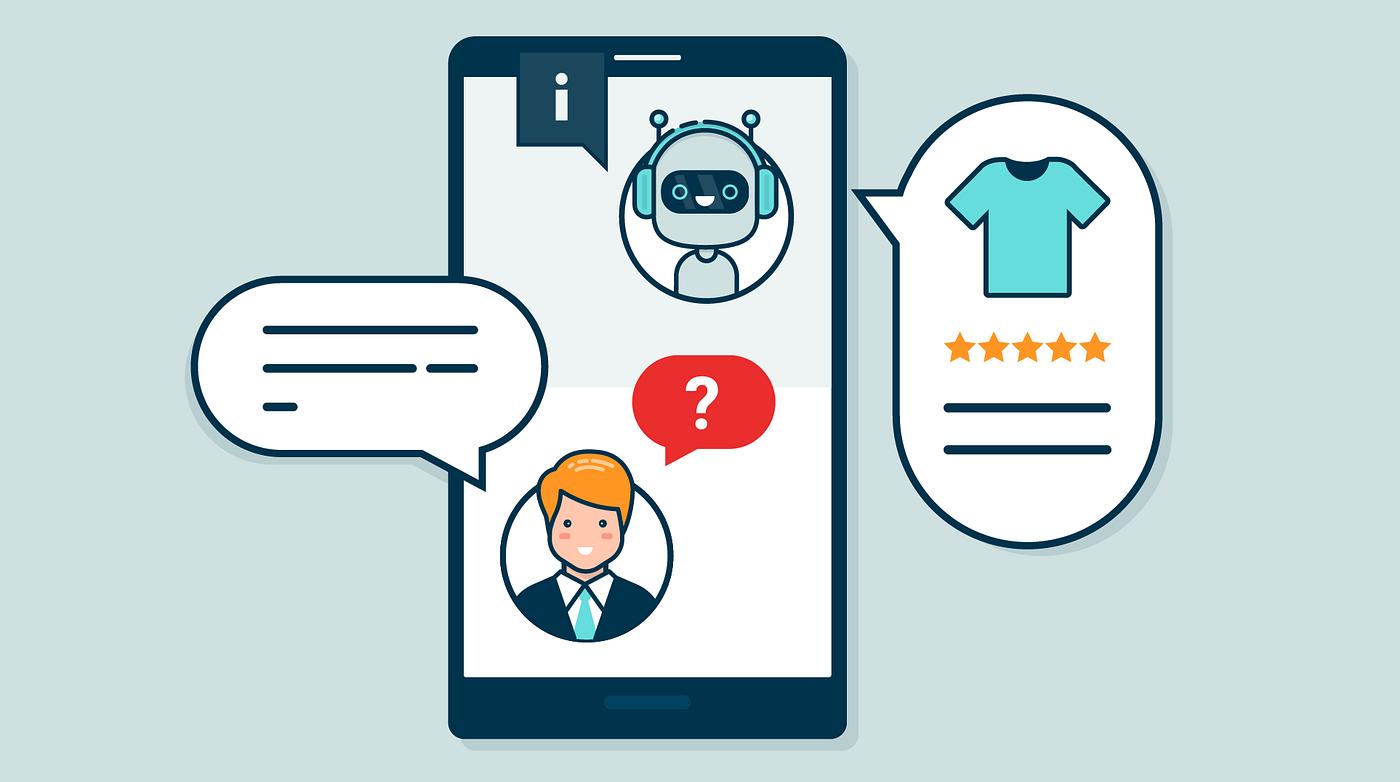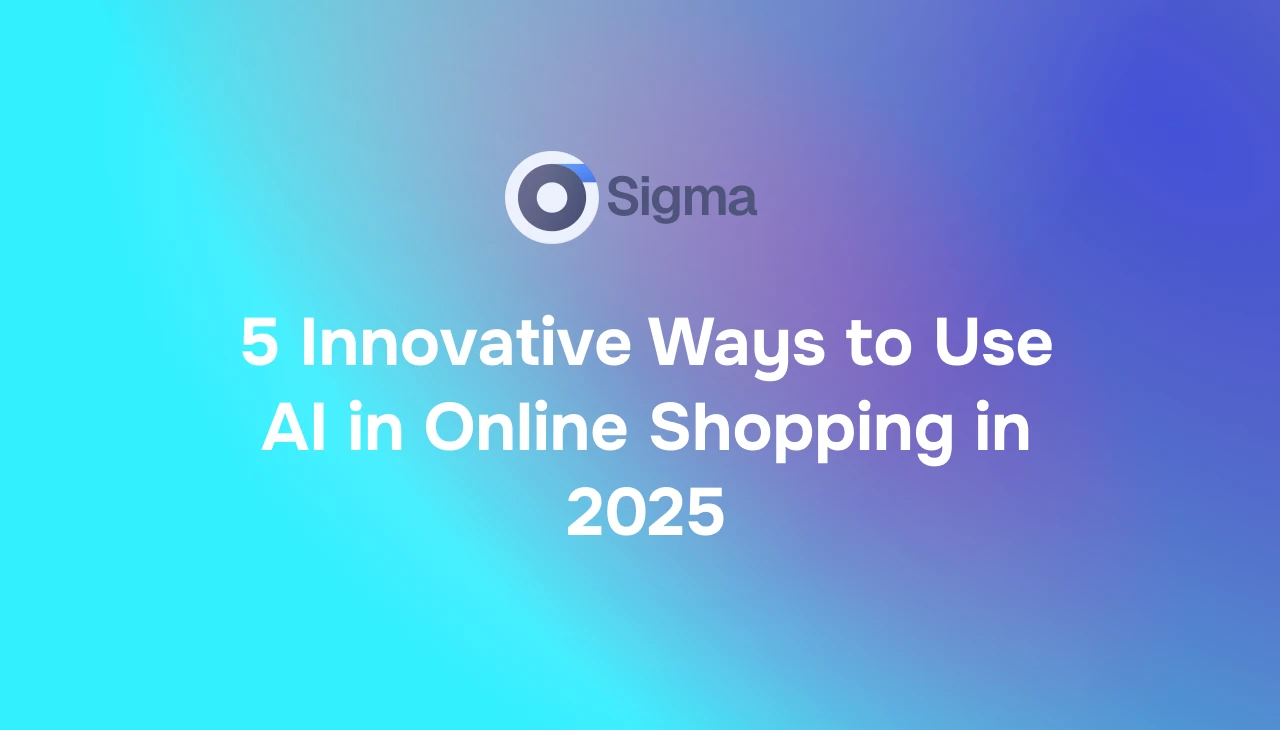AI is reshaping online retail super quickly - moving beyond simple automation to create truly great shopping experiences. In 2025, AI isn't just about efficiency now; it's the core engine driving personalization, engagement and operational excellence.
A U.S. study highlights this impact, finding that retailers adopting AI solutions saw a 2.3x increase in sales and a 2.5x boost in profits compared to non AI adopters.
This article looks into five innovative AI applications redefining how consumers interact with e-commerce platforms. It’s set to make online shopping more intuitive, efficient and enjoyable than before.
5 Smart Ways AI in Online Shopping Is Making Life Easier
AI in online shopping isn’t just about flashy tech. It’s solving real problems and making things better for both shoppers and businesses. Here's a quick look at how it's being used and why it matters so much:
1. Hyper-personalized shopping experiences
Online stores used to show the same product suggestions to everyone. However, that doesn’t work anymore. In 2025, AI makes shopping feel personal by learning from what each person actually does.
For example, like what they’ve browsed, what they’ve bought and even what they’ve liked on social media.
The goal is simple - show people what they’re most likely to want. That means
- product recommendations that match their style,
- bundles that fit their needs, and
- offers that actually make sense.
It’s not just about selling more, it’s about creating a better experience that feels like the site was made just for them.
And it works. Adobe’s 2025 report found that 92% of shoppers said AI enhanced their experience, and 87% were more likely to use AI for larger purchases. Rep AI also found that 64% of AI-powered sales came from first-time shoppers. These figures suggest a strong uptick in conversion.

Figure 1: AI-driven hyper-personalization creates unique shopping journeys.
Takeaway: If you want people to feel like your store understands what they are looking for, AI is a must here. It’s one of the best ways to boost sales and build loyalty.
2. AI-powered virtual try-on and augmented reality
One of the biggest downsides to shopping online is not being able to see or try things out before buying. AI helps solve that with virtual try-on and augmented reality (AR) tools.
Now, people can use their phones to see how clothes fit or how makeup looks on their face. Also how a piece of furniture fits in their room without stepping into a store. The AI maps the product onto your photo or space in real time.
It’s capable of giving you a realistic preview that helps you feel more confident about what you’re buying.
And here’s the best part - this tech doesn’t just look cool, it works. Return rates drop, shoppers feel more sure of their choices. In this case customers are more likely to go through with a purchase.
According to Grand View Research, the global virtual try-on market was valued at $9.17 billion in 2023. They are projecting it to reach $46.42 billion by 2030, growing at a CAGR of 26.4% from 2024 to 2030.

Figure 2: Virtual try-on technology enhances online shopping by allowing realistic product previews.
Takeaway: Adding AR and try-on features to your online store can cut down on returns. It can make people feel better about buying from you. It’s a win for both the customer and the business.
3. Intelligent Chatbots and Conversational AI
Let’s be honest, no one likes waiting for help. This is especially true when shopping online. That’s where AI-powered chatbots come in. They’re nothing like the clunky bots we used to deal with. In 2025, they’re smart, fast and quite helpful actually.
These AI assistants can answer questions and walk you through purchases. It can also help with returns, and even solve issues after the sale in real time. They’re available 24/7. This means no waiting for business hours and no long hold times.
The seamless integration of these AI agents into the browsing experience, such as those that run locally within a browser environment like AI Browser, ensures customer interactions are private and secure. There shouldn’t be data passing through external servers.
This approach enhances user trust and provides a more fluid, integrated support experience, ultimately leading to higher conversion rates and improved customer loyalty.

Figure 3: AI-powered chatbots provide instant, intelligent customer support.
Takeaway: Adding a smart virtual assistant or chatbot to your site can help your customers faster, build loyalty. It can give your support team more time to handle bigger problems.
4. Predictive analytics for demand forecasting and inventory management
AI isn’t just about what customers see. It also works quietly behind the scenes, it helps businesses run smarter. One major use is in predicting demand and managing inventory more effectively.
AI can look at the past sales, trends, seasons and even things like the weather or what’s popular on social media. Based on this, AI can tell in advance which products are going to be in demand and when. This helps stores make better decisions like knowing how much stock to order or when to run a sale.
The results speak for themselves. About 44% of retailers already use AI for this and it’s helping them avoid running out of bestsellers or wasting money on items that don’t sell. Fewer stockouts, less overstock and smoother operations overall.
Takeaway: Leverage AI-driven predictive analytics to optimize inventory, reduce waste, and ensure product availability, leading to significant cost savings and improved customer satisfaction.
5. Enhanced fraud detection and security
As online shopping keeps growing, so do the risks. Fraud is still a huge problem with fake transactions and stolen accounts But there are now innovative ways to use AI in online shopping - thankfully!
Unlike old security systems that follow fixed rules, AI looks at tons of data in real time to catch anything suspicious.
For example: strange buying behavior, sudden changes in account activity or sketchy payment attempts. It learns as it goes, adapting to new fraud tactics and spotting red flags that a human might miss.
Customers trust your store more if they feel like their info is in good hands. This results in more sales and brand recognition for your shop.
Figure 4: AI is crucial for securing the future of online shopping.
Takeaway: Prioritize AI-powered fraud detection to protect your business and customers. Foster a secure online environment that builds trust and encourages repeat purchases.
Conclusion
AI in online shopping isn’t some far-off idea anymore. This is already here and changing the way we shop. From personal recommendations and virtual try-ons to smarter customer support and stronger fraud protection! AI is helping stores work better and making shopping easier for everyone.
This isn’t just about flashy tech. It’s about building faster, safer and more personalized experiences that people actually enjoy. And as we move through 2025 AI will only become a bigger part of how online stores operate.
If you want to stay competitive - now’s the time to start using these tools. They’re not just good for business, they’re good for your customers too!










